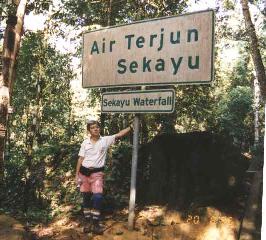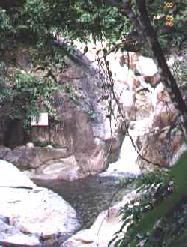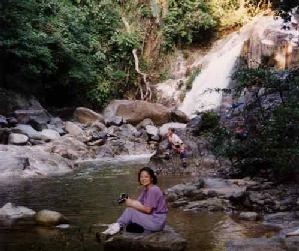The heartland of Terengganu 28-30 Mac 2008
Routes28 Mac (Friday)
KL -Kuantan -Jabor- Jerangau - Bukit Besi - Sekayu (Kuala Berang)
29 Mac (Saturday)
Sekayu- Kuala Berang- Gua Musang - Pos Slim - Brincang - Tanah Rata
30 Mac (Sunday)
Tanah Rata - Tapah - Hiway Plus ke Selatan
Routes Info
Kuala Lumpur is the capital and the largest city of Malaysia. The city proper, making up an area of 244 km
2, has an estimated population of 1.6 million in 2006.
Greater Kuala Lumpur, also known as Klang Valley, is an urban agglomeration of 7.2 million. It is the fastest growing metropolitan region in the country, in terms of population as well as economy
Kuantan is the state capital of Pahang, the largest state in Peninsular Malaysia. It is situated near the mouth of the Kuantan River and faces the South China Sea. The population of Kuantan is 58% Malay, 32% Chinese, 4% Indian and 6% other races. If one measures the distance along the east coast of Peninsular Malaysia, it is located roughly halfway between Singapore and Kota Bharu.
Jerangau is a town in central Terengganu, Malaysia.
Bukit Besi is a small town in Terengganu, Malaysia.
Kuala Berang (est. pop. (2000 census): 5,803) is the seat and largest town of Hulu Terengganu District, Terengganu, Malaysia. The town serves as a gateway to Lake Kenyir. The historical
Terengganu Inscription Stone was found near Kuala Berang in 1899.
Gua Musang is a town and territory (jajahan) in Kelantan, Malaysia. It is the largest district in Kelantan. Gua Musang is administered by the Gua Musang District Council. Gua Musang district is bordered by the state of Pahang to the south, Terengganu to the east, Perak to the west and the Kelantanese districts of Kuala Krai and Jeli to the north. It is a small railway town about 160 kilometers south of Kuala Krai. The town lies on the railway line from Kota Bharu to Gemas.
Tanah Rata is a major town located in Cameron Highlands, Pahang, Malaysia. The name "tanah rata" means
flat ground in Malay language and it refers to the relatively flat area on which the town is located amidst this highland region.
Tapah is the administrative town of the district Batang Padang, Perak, Malaysia. The name "Tapah" is said to be originated from the name of a fresh water fish,
"Ikan Tapah". The scientific name of the fish is
Wallago attu. The locals said that the name has been taken from the Malay-Perak dialect word which means "no worry".
Interesting place...
Jewel of East Coast-Sekayu Waterfall
From Kuala Terengganu, proceed inland to the town of Kuala Berang. Just before reaching the town center, watch out for a turning on the left! At this junction , there is a road that leads motorist to the Sekayu Waterfall. There are indicative signs before the junction. The distance along this country road is 14 kilometers long.
The road will continue to pass through small villages and countryside. Nearing the end of the road, signboard there will indicate that the park is situated after a right turn. The park is situated at the fringe of the mountain range.
| Signboard of this design are placed in many locations to guide visitors to the Park. This is a mature park with chalets and campsites for overnight stay. It also practices a security system, which kept the main gate locked after dark. So check with the park authority if you intend to stay there and reporting after regular working hours, on the closing and opening time. |  |
 | People looking after the park had tried hard to make the area interesting. Features like classify it a natural park - this is followed up with the identification of timber trees and other Malaysian flora. We were also surprised to find many species of mushroom along the track. There are waterfalls and cascades along the 2 kilometers stretch of the river. A ad hoc trail follows the river bank. Finally, this trail ends at the main waterfall that this park is famous for. |
| The fair size Tersat River runs the entire length of the park. There are scenes of a river going through the rapids, interspersed with major drops. Such terrain makes the stretch unsuitable for white water activities. There are also many attractive aspects. Examples are scenes of water tripping over the rocks and boulders. |
|  |
 | The more distinctive waterfall is this last drop before the hill slope get rather steep empty into a flat bedded wide gorge. The single drop is approximately 25 meters high with no pool at the base. The whole area is littered with boulders. |
This is a wonderful place for rest, river trekking and admiring Malaysian Flora!
Some pics in the ride...































































































































